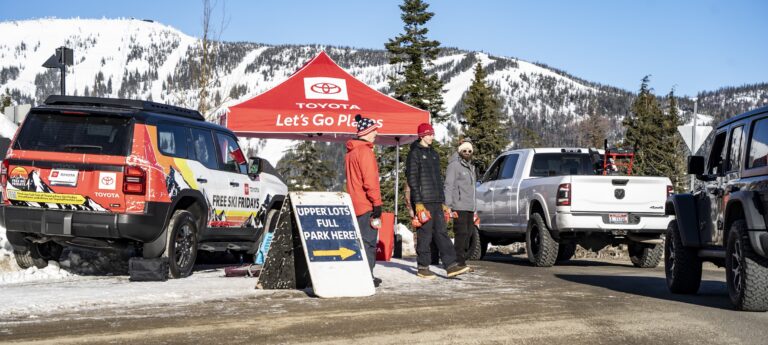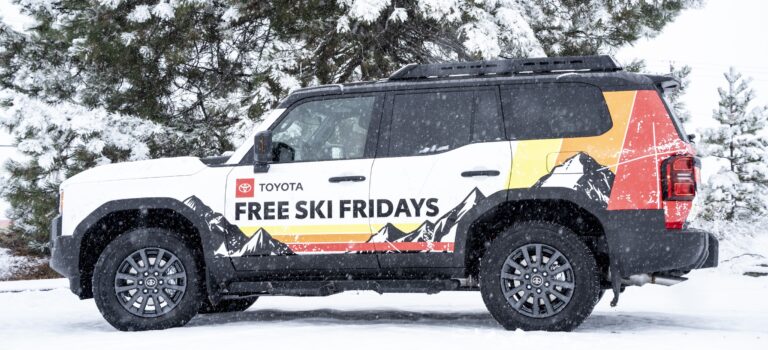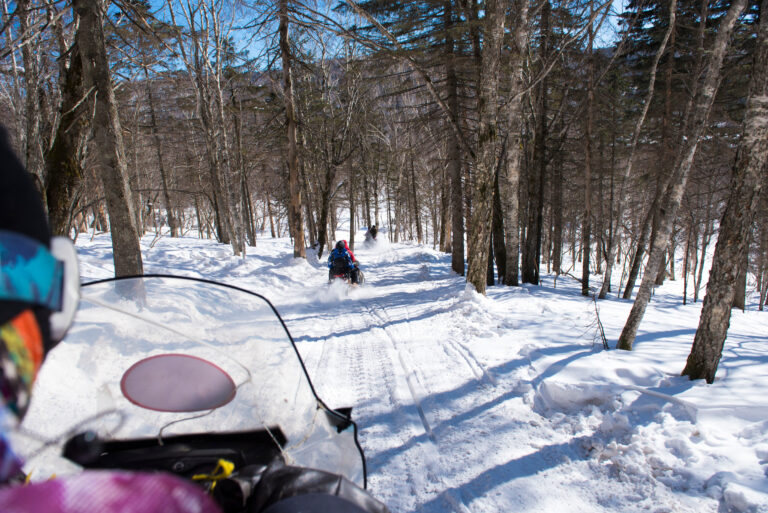Do Bike Commuters Get The Support They Need?
Seventy-nine million Americans rode bicycles on a paved surface at least once in 2004, the most popular human-powered leisure activity according to the Outdoor Industry Association. That’s more than 25 percent of the nation’s population. Mirroring that trend, the number of commutes by bicyclists in the Spokane region has increased, for 2004 and 2005 months in which comparable data is available, anywhere from 39 to 134 percent. Despite this jump in bicycling commuters, barely one percent of the area’s commuters regularly bike to work. To keep this trend going, several private and public and advocacy groups are working to get commuters on their bikes.
With crowded roads and high gas prices that look to go higher, commuters can beat traffic and save money by bicycling. Spokane Bicycling Club member Eileen Hyatt says, “Bicycle commuting is fun and it makes you feel good. You feel invigorated when you get to work.” However, Spokane city and county roads are almost the exclusive domain of cars, trucks and SUV’s, putting bicyclists at a distinct disadvantage. Since most of those who would commute don’t because of safety concerns, getting comfortable on the road is crucial.
One approach to making bicycle commuting more safe and enjoyable is Spokane Bicycle Club’s “Bike Buddy” program. Program director Hyatt says that “commuters need to be well versed in commuting skills.” To help would-be bicycle commuters gain these skills, the program provides experienced commuting mentors so “bike buddies” can build skills and prepare both equipment and a route. According to Hyatt, about two dozen cyclists have taken advantage of the club’s program.
Some seek to accelerate the pace of improvements to the bicycling infrastructure and driver attitudes through the Critical Mass movement. Chase Davis, Sierra Club Representative for the Upper Columbia Region, is one force behind the area’s renewed CM movement. Fundamentally leaderless, CM rides usually occur on the last Friday of each month in nearly 300 cities worldwide as a bicycling celebration that pushes for greater awareness of cyclists within a multi-modal transportation system.
The politics of bicycle commuting go beyond pleasure and exercise for Davis. “At a time when we are at war, getting out and doing CM rides is a peaceful and legal way to show that alternative transportation is good for the environment, health and national security.” This is especially important, Davis says, because “many elected officials are not doing common sense things, not increasing how far cars and trucks go on a gallon of gas.” The October 28 Spokane Critical Mass ride drew about two dozen cyclists, but also resulted in citations from police. Cyclists ran red lights, meandered through intersections, and generally did what they could to slow rush hour traffic. Some drivers willingly yielded to cyclists who blocked downtown streets; others honked and yelled from their cars, clearly uninspired by the amorphous mini-mass.
Davis expressed disappointment with the riders who rode in an aggressive and often illegal manner.”That kind of riding doesn’t make people feel good about bicycles or get them on their bikes” he says. “We have to encourage others to be involved in a respectful way” while pushing the economic advantages to downtown business.
Sally Lodato, Chair of the City of Spokane Bicycle Advisory Board (BAB) also pushes the economic development angle. Lodato wants the focus to shift from the needs of commuters to the needs of all bicycling citizens. “We need to represent these folks,” she said. “We need to find out what it will take to get citizens on their bikes, to link neighborhoods and parks. We need to make it easy to ride a bike to downtown.” Lodato wants cycling needs looked at in a lifestyle sense. “We have a great opportunity to be a cycling community,” she say, “but cycling has not been embraced as an economic development activity; no matching funds or grants are sought [by the city] to supplement the budget.”
What grants are received are often due to help from the Spokane Regional Transportation Council. SRTC Senior Transportation Planner Eve Payne, a cyclist, considers herself one of the right people on the right project. She helps agencies served by the SRTC to submit grant applications for local bike and pedestrian pathways and planning projects. One long anticipated project is a new bike route map, which should be in draft stage by late December. The map will show signed routes, bike lanes, and key destinations while including safety tips and recreational routes. Although the map has not been updated since 1994, Payne hopes to see it updated every five years.
Another right person in the right place is Spokane County Engineer Ross Kelley. Like Payne, Kelley is a cyclist. Kelley says one of the greatest impediments to safe bicycle commuting is the location of many jobs in older parts of town and the county, areas often served by older and narrower streets. When repaving and restoring roads, engineers strive to provide outside lanes four to five feet wider than the older and/or inside lanes. Wider roads make cycling safer by providing more area for debris to be swept into, water to run off, and snow to accumulate. Whether for pedestrians, bicyclists, cars or buses, Kelley’s approach is to make roads multi-modal friendly. He expects this approach to be long lived as more communities, Liberty Lake among them, are building systems to support the needs of bicyclists and walkers while minimizing conflicts with vehicular traffic.
One entity lacking an experienced cyclist in a serendipitous position is the Spokane City Engineer’s office. BAB chair Lodato says bicycling concerns are generally given little credence by city planners, largely because there is no one with a personal stake in such projects. Rather than include BAB members in the process of drafting new street standards, she says volunteer Board members must track down city employees to seek information and give input. As Lodato put it, the BAB “looks good on the web, but in reality we’re nothing. We’ve got the talent, but we’re not consulted. We have no effective liaison with city planners, so we get nothing done.” The city’s liaison to the BAB, Jerry Sinclair, admitted as much. In a phone message, he said that “I’m more of a resource, a person who would ask the right questions to the right people and get back to the BAB. I’m not a BAB or a cycling supporter.” This is not to say Sinclair is antagonistic to the work of the BAB, but he brings no cycling insight to the position.
Steve Loveland, owner of Spokane bicycle shop Two Wheel Transit, says it all comes down to six words: Same roads. Same rules. Same rights. These words form a mantra for bicycle advocates who want to see more people ride for fun, fitness, errands, or to and from work. It’s building on this mantra to create safer and more enjoyable cycling experiences that requires politicking, an often frustrating process that doesn’t always yield timely or obvious results. There is a need for cyclists to overcome their hesitancy to politic, to stop expecting someone else to step up. Otherwise, the sense of danger, and the danger itself, that keeps many cyclists from being regular commuters will remain.
Related Websites
America Bikes: http://www.americabikes.org/
Bicycle Alliance of Washington: http://www.bicyclealliance.org/
Spokane Bicycle Club: http://www.spokanebicycleclub.org
Spokane County Commute Trip Reduction: http://www.spokanectr.org/ctr/
Outdoor Industry Association: http://www.outdoorindustry.org/
Safe Riding Tips
Spokane Bicycle Club’s Hyatt suggests riders become a “visible and predictable part of the traffic stream.” To do this, bicyclists should do the following:
- Obey the law; traffic laws work for both bicyclists and drivers.
- Make eye contact with drivers, particularly drivers behind you at stop lights and signs.
- Signed bike routes tend to be safer and make for more enjoyable cycling.
- Ride with the flow of traffic; signal turns well in advance when safe to do so.
- Be visible, wearing bright clothes, yellow triangles, and flashing lights, both front and rear.
- Don’t ride on sidewalks as drivers will be surprised should you pop off the curb and into the street.
- Don’t ride in the gutter as this is often taken as an invitation by drivers to squeeze by; instead, ride where the right-side tire of vehicular traffic would normally be.
- Don’t ride to the front at stop lights and signs. Just because you can, doesn’t mean you should. Instead, stake your place in the right side of the travel lane.
Recent State Legislation
Each of the following bills was passed by the 2005 Washington State Legislature and recently enacted into law:
- HB 1108 “prohibits passing when bicyclists, pedestrians, law enforcement or farm equipment is in view and approaching from the opposite direction.”
- HB 1254, creates a “Share the Road” license plate available for purchase in late 2005 or early 2006 with the funds directed to bicycle and pedestrian education and safety programs.
- SB 5186 which calls for comprehensive plans to include an inventory of bicycle and pedestrian facilities with the goal of promoting “policy and planning efforts that increase access to inexpensive or free opportunities for regular exercise in all communities around the state.”
Recent Federal Legislation
The recently passed National Transportation Bill contains over $1.1 directed to bicycle related projects, nearly three times the $400 million allocated in 2004.
Some local/regional Projects in the works, funded by Transportation Enhancement Act, totaling nearly $1.36 million:
- Pedestrian Education and Safety Program ($250,000)
- Hazel Creek Pedestrian and Bicycle Pathway ($145,000)
- Ben Burr Pedestrian and Bicycle Pathway ($597,000)
- Midway Little Spokane Pathway ($349,000)
- City of Spokane Valley Planning ($16,000)













